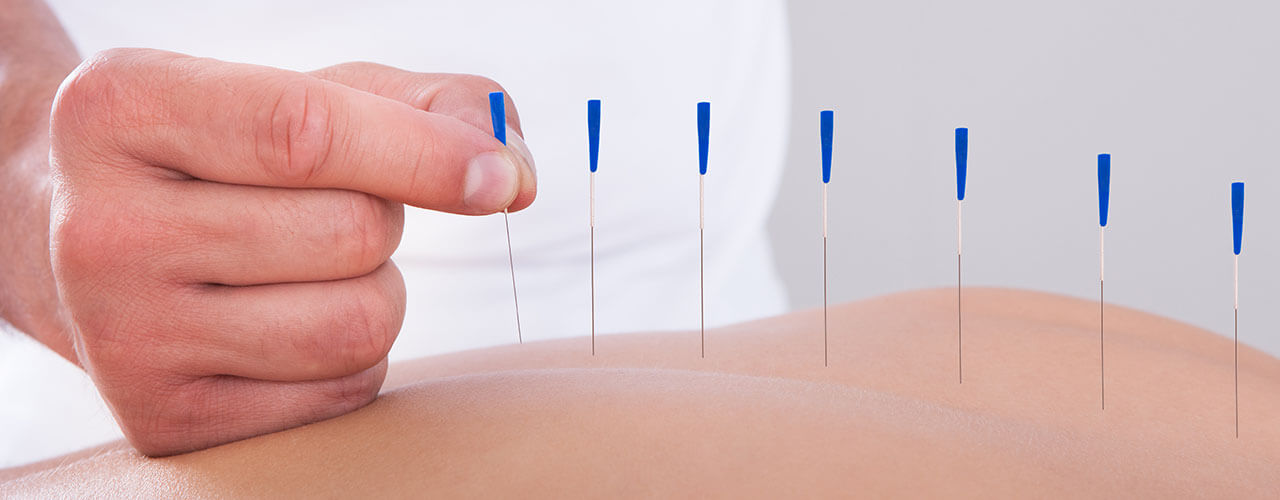The technique of dry needling is getting popular for the treatment of pain and movement impairment. Dry needling mainly focuses on the hypersensitive muscles and the trigger points of the body which causes limited pain and then transfers it to the other parts of the body. The exact mechanism of dry needling is still unknown to the practitioners yet they are following the theory of trigger points which removes hypertension and the specific area becomes more responsive. It is a really effective process and calms your nerves. If you are having pain or impairment in any muscle or body part, this is the best way to remove it as it takes not much time to cure the pain and aches. It works well for back, neck, jaw, and headaches.
Basically, the function of the dry needling is to induce a spasm in your body which later detects the trigger point, and thus this process allows the muscles to relax and pain to ease. Sound a little painful? Yes, it is a little painful as poking in various parts of the body is no joke and neither messing with the practitioner armed with needles. It hurts a bit but doesn’t leave a long reaction or infection or irritation. This method is really legitimate and effective as the needle have to go in-depth of your body at specific muscles which no normal therapy offers or allows you. This is the best way to release pain and achieve that level which no other therapy or treatment can as it strikes the targeting muscles and induces spasms.
Acupuncture Vs Dry Needling
You must be thinking right now, that this sounds a lot more similar to acupuncture. Well, you are not alone in this, many people tend to think or say that they are one thing. But in reality, they are not. Dry needling is not acupuncture, it is basically a western technique used by the physical therapists which include the use of thin acupuncture-like needles. If you have neck pain, jaw pain, headaches or back pain, then this might be the best therapy you have been waiting for.
Research on Dry Needling: Is it legitimate?
There are a lot of researches done on dry needling, and they seem to be really effective and useful for myofascial trigger points, most importantly when it is ultrasound-guided. Four sessions of dry needling were given to people suffering from chronic neck pain and over a period of two weeks, they showed the reduction in pain intensity, perceived neck disability, sensitivity to pain, and increase muscle strength.
So much more studies and researches have shown that it is the most effective way to reduce chronic neck pain as it is a simple, noninvasive and a low-risk method. Though it should be done correctly and by someone who is professional and well trained in this. With these factors in mind, it is very disturbing that dry needling is yet not known so well by the world.
According to a triple board-certified physician, there is a recent study which demonstrates that putting dry needling in rehabilitation can greatly affect those who have had a stroke. As it varies their range of emotion and improves them.
Is Dry Needling right for you?
Dry needling should be considered by anyone who suffers from muscle pain –in the jaw, shoulders, back or neck especially if the therapist you have taken haven’t done their magic. A larger action plan is involved in dry needling as it triggers the points and includes stretching and strengthening of the muscles and the pain never comes back. Dry needling is becoming quite famous now as it gives a low-risk for any other infection and is a really effective and easier way to make your pain go away. Though it can be pricey at times and maybe your insurance won’t cover it but trying it is worth it.
The question which arises now is why is it controversial? Dry needling works in between the conventional and technical medical techniques so apart from money and safety measures going to someone who is not trained can be dangerous.
Dr. Kalika in her article about dry needling controversy said; “I think there are two reasons, 1) We cannot yet find the exact mechanism of dry needling. 2) Dry needling is a time consuming and not an easily learned skill. There is a big resistance from the medical community because doctors and specialists look for quick, invasive and more profitable solutions. There is also pushback on this procedure because no medicine is injected during the procedure, so there is no push from the pharmaceutical industry either.”
So is dry needling good for you? Well, it has its risks and it is not recommended for those who are weak at heart as it causes pain when the muscles release the trigger point. But if other therapies and treatments are not responding and you have back pain, mid-back pain, neck pain, sciatica, plantar fasciitis, shoulder pain, carpal tunnel, hip pain, and severe headaches then this is the right treatment for you.
Safety Measures
Is dry needling dangerous for you? And most importantly find or Hire a mobile Therapists or someone who is experienced and has a dry needling certification. Well, yeah it can be if you go to someone who is not well trained or is not a professional. If you are considering taking dry needling treatment then you should definitely know the risks of the treatments as well as the pros and cons regarding everything which can affect you. Dr. Kalika said, “There are case reports demonstrating complications such as spinal epidural hematoma, pneumothorax (punctured lung), deep infection, and radial nerve injury, among others.”
These are all aspects of dry needling. From its legitimation to its risks and safety. Though through this article, you must have ensured that dry needling is really effective and give wonders to your aching muscles. Go the healthy way, live your life peacefully.


